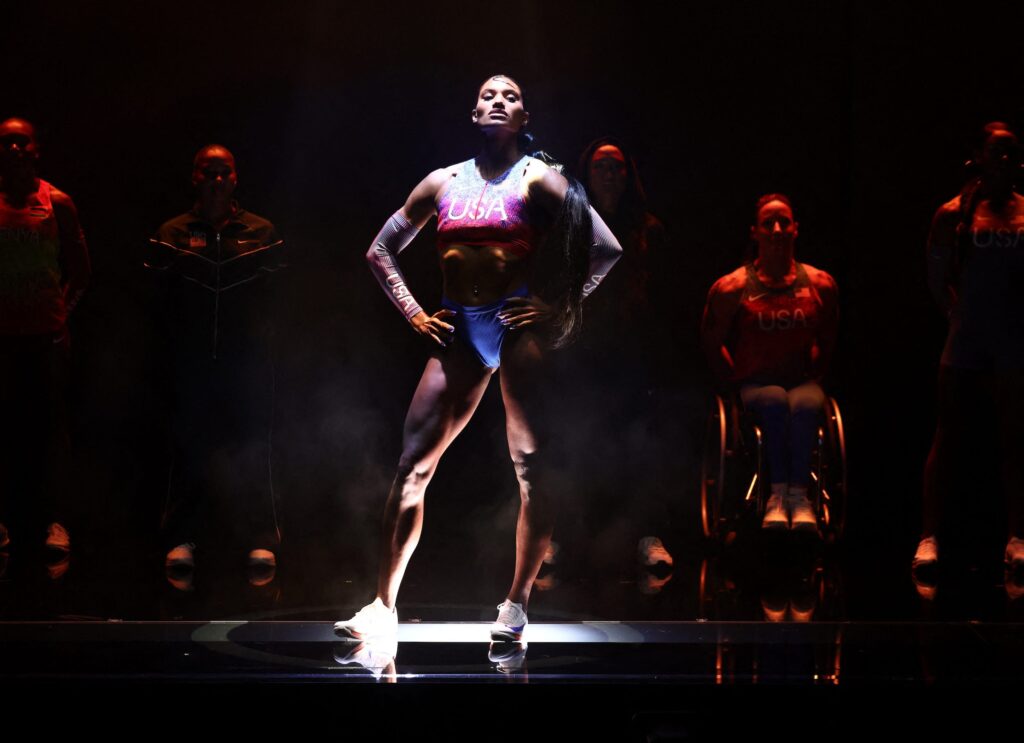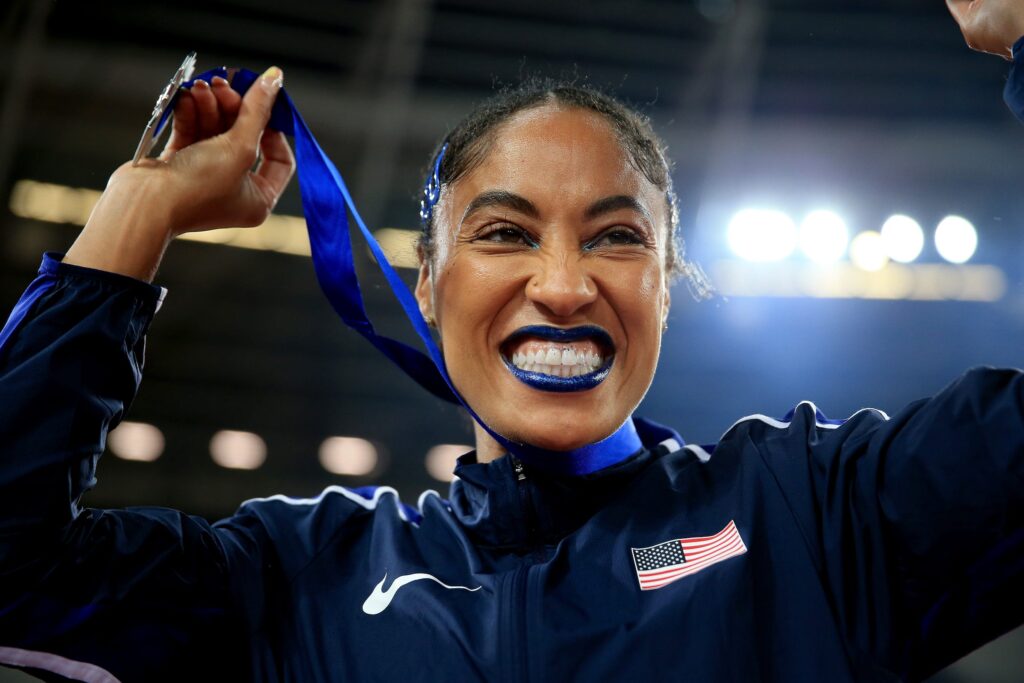- A Team USA bodysuit is reigniting a conversation about the design of women's athletic outfits.
- Retired runner Lauren Fleshman said if skimpy outfits were efficient, men would also wear them.
- In recent years, women have pushed for more modest uniform options.
A skimpy red, white, and blue bodysuit featured next to a much more modest version for men took the sport of track and field by storm on Friday.
The Team USA bodysuit, first showcased by running outlet Citius Mag as a piece to be worn during the Olympics, drew ire and derision from female track and field athletes, sparking a conversation for many athletes about how far the sport has come in creating an equal playing field — and how much farther it still has to go.
Following the reveal of the showy unitard, athletes quipped that they would definitely need a thorough wax to wear the women's piece. On the mannequin, at least, the sides of the crotch were on full display. Others wondered if it was even possible to wear the outfit while running, vaulting, or hurdling without risking a major wardrobe malfunction.
Some track and field athletes defended the outfit. Olympian long jumper Tara Davis-Woodhall said the outfit was "beautiful" in person during a media gathering of Olympic and Paralympic athletes on Tuesday, per the Washington Post.

Nike, which designed the suit and displayed it among dozens of other design kits during a Thursday Paris event, defended itself, pointing out that the bodysuit was just one uniform iteration out of nearly 50. There were shorts options as well.
Jordana Katcher, Nike's vice president for global sports apparel, also told the Post that several women athletes had requested the unitard specifically.
Nike did not immediately respond to a request for comment from Business Insider.
Sprinter and hurdler Queen Harrison-Claye — who competed in the 2008 Summer Olympics — took the more humorous route when she asked for a new company to sponsor the upcoming games.
"Hi @europeanwax would you like to sponsor Team USA for the upcoming Olympic Games!? Please and thanks," she wrote in an Instagram comment.
Harrison-Claye told Business Insider in an interview that the lighthearted approach was just a reflection of how she interpreted the campaign. In her opinion, sexism was at play in Nike's decision to display the itty-bitty bodysuit — but says there are two sides to every story.
'Why are we presenting this sexualized outfit as the standard of excellence?'
For Harrison-Claye, the cut of the controversial uniform "didn't make sense from an athletic standpoint, or even aesthetically," — but that didn't mean that Nike should completely scrap the idea of having different options.
"The beauty of athletics and women is we're not a monolith," Harrison-Claye said. "For some women, they can see that and be like, 'Oh, I will feel so cool, and I'll feel sexy," and they have that right to feel like themselves … and then there will be a lot of female athletes that are like, 'Oh no, this cut is too small.'"

Other athletes, like Lauren Fleshman, a retired runner and author of "Good for a Girl: A Woman Running in a Man's World," told The New York Times that she took issue with the fact that the company chose to preview the revealing women's suit alongside the covered-up men's suit — instead of displaying two similar suits.
"Why are we presenting this sexualized outfit as the standard of excellence?" Fleshman told the outlet. "In part because we think that's what nets us the most financial gain from sponsors or NIL opportunities, most of which are handed out by powerful men or people looking at it through a male gaze."
Harrison-Claye shared a similar sentiment.
"There's always this feeling that our value is in our bodies versus the performing that our bodies do," she said.
A broken record
Women are being spotlighted in sports like never before. Athletes like Naomi Osaka and Sha'Carri Richardson are mega-stars with millions of fans.
Most recently, there has been so much hype around women's college basketball stars Angel Reese and Caitlin Clark.
Harrison-Claye agreed that sports have come a long way in fairly representing women, but the inequality is still there — she pointed to the pay discrepancy in track and field as one example.
She also pointed out that for Black women, the issues are magnified. Black women athletes are often hyper-sexualized or painted as angry or evil. A recent example of this is Reese being called a villain by sports analyst Emmanuel Acho after the rising basketball star addressed receiving racist and sexist attacks from viewers.
Skimpy outfits in women's sports have become a hot-button topic in recent years. More athletes are loudly questioning why their uniforms are so different from men's.
Women athletes in sports like gymnastics, volleyball, and track and field are sometimes expected to wear bikini bottoms or short leotards. There isn't a technical reason the difference exists — though some women, like track and field athlete Katie Moon, who said she wore a body suit similar to the controversial Nike one during a previous Olympics, say that the more revealing outfits work better for her.
"Women's kits should be in service to performance, mentally and physically. If this outfit was truly beneficial to physical performance, men would wear it," Fleshman wrote on Instagram
And that's a large part of why women athletes have been pushing back.

In 2021, the Norwegian women's beach handball team took on a fine of $1,760 after refusing to wear bikini bottoms during the European Championships. Their move prompted the International Handball Federation to change its rules and allow women to wear tank tops and bike shorts.
That same year, Germany's Olympic gymnastic team decided to show up to the Tokyo Olympics in black bodysuits that went up to their ankles — similar to men's styles. The outfits were not against the rules, but the team said they intentionally chose to wear the full-length leotards to protest the sexualization of female gymnasts.
Harrison-Claye said she wants to help the next generation of women feel confident by being her "authentic self" on the track. She emphasized that women should choose to wear what they want while they play and is in the process of founding a social club to inspire young female athletes.
"All we can do in this generation is to keep cultivating it for the next one," she said.
